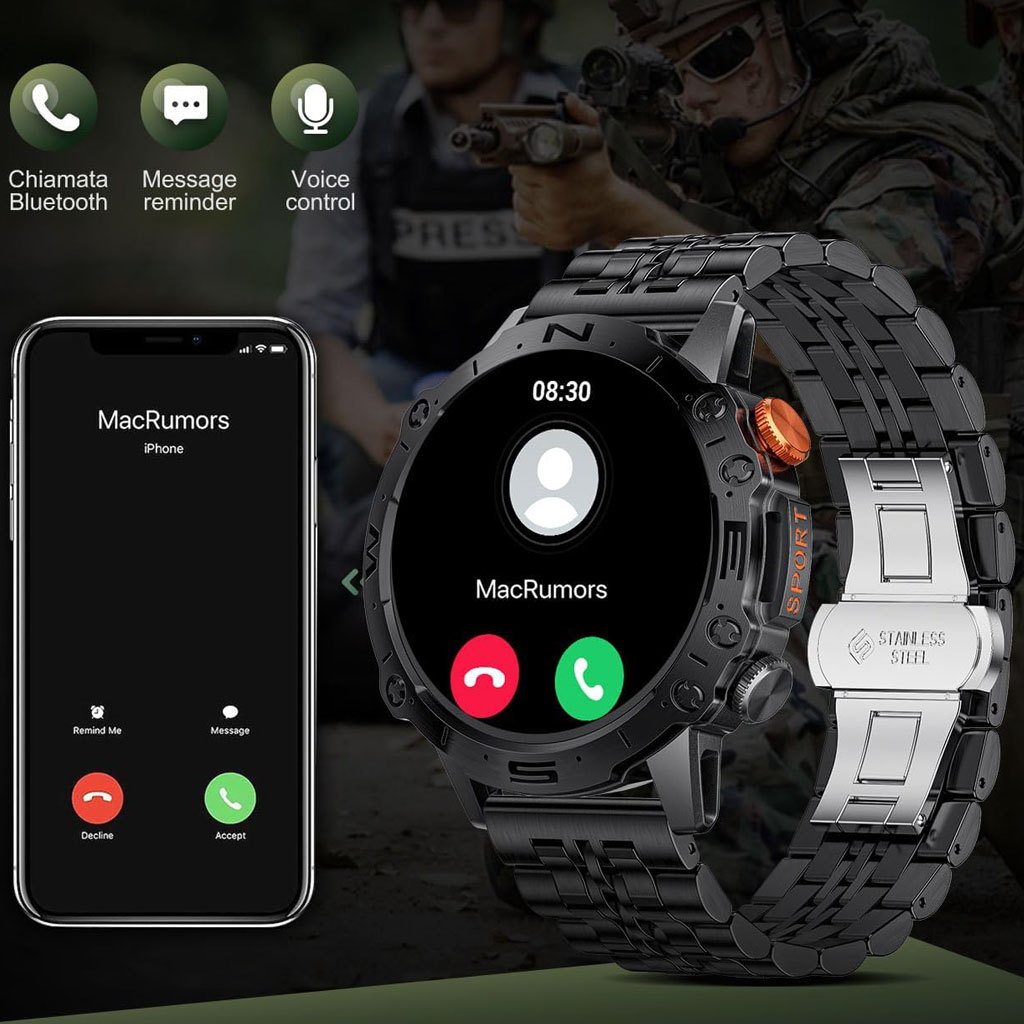
Last Updated | October 22, 2023
In the world of e-commerce, Shopify is a leading platform for businesses to set up their online stores. With the ever-growing demand for tailored solutions, creating a Shopify app can be a game-changer.
This step-by-step shopify app development using Laravel guide will walk you through the process of building a winning Shopify app using Laravel, a powerful PHP framework. Whether you’re a developer or a business owner looking to enhance your Shopify store, this shopify app development using Laravel guide will help you understand the essentials.
So, without any ado, let’s get started…
Why Choose Laravel for Shopify App Development
Before we dive into the nitty-gritty of creating shopify app development using Laravel, it’s crucial to understand why Laravel stands out as the preferred choice for this venture. Let’s explore the compelling reasons behind this decision.
Read Also Best Mobile App Builder for Shopify
1. Introduction to Laravel
Laravel, often referred to as the “PHP framework for web artisans,” is an open-source PHP web application framework. It’s known for its elegance and simplicity, which sets it apart in the world of web development.
- Clean and Elegant Syntax: Laravel’s code is elegant and expressive, making it a developer’s dream. The clean syntax ensures that even complex tasks can be tackled with simplicity.
- Active Community: Laravel boasts a thriving and engaged community of developers. This means you’ll have a wealth of resources at your disposal, including extensive documentation, tutorials, and forums.
2. High Productivity
Laravel offers a range of features and tools that significantly enhance productivity during the development process.
- Artisan Command Line: Laravel’s command-line tool, Artisan, automates many complex and repetitive tasks, speeding up development and reducing the margin for error.
- Modular Packaging System: Laravel’s packaging system is a delight for developers. It allows you to add pre-built modules, saving valuable development time.
3. Secure Authentication
Shopify app development places a premium on security, and Laravel excels in this area.
- Secure User Authentication: Laravel makes it easy to implement secure user authentication, ensuring that only authorized users can access your Shopify app.
- Access Control: With Laravel, you can fine-tune access control, specifying precisely who can perform specific actions within your app. This helps protect sensitive data and features.
4. Webhooks Integration
Webhooks are vital for real-time data updates from Shopify, and Laravel makes their integration seamless.
- Understanding Webhooks: Before configuring webhooks, it’s crucial to understand their role in Shopify app development. Webhooks enable your app to receive real-time data updates from Shopify.
- Configuring Webhooks: Laravel simplifies the process of setting up webhooks. You can easily register webhooks within your Shopify store, ensuring that your app receives timely data updates.
Read Also Shopify Hydrogen Apps
5. Extensive Ecosystem
Laravel’s ecosystem includes a vast array of libraries, packages, and modules that can be leveraged to streamline Shopify app development.
- Comprehensive Packages: Laravel’s ecosystem offers a wide range of packages and libraries, allowing you to extend the functionality of your app with ease.
- Third-Party Integrations: The Laravel ecosystem is rich with third-party integrations, making it straightforward to connect your Shopify app with other services and systems.
Shopify App Development Laravel – A Step-by-Step Guide
Well, now that we are done with the basics of Laravel and why it’s great for businesses to add customization to their business models and interact more openly with customers, let’s move on and see the detailed shopify app development using Laravel process. And if you still don’t feel comfortable with the process, Folio3 Laravel shopify app development services can always help you get it done with reliability and affordability.
So, let’s get started…
Setting Up Your Development Environment
The first crucial step in your shopify app development using Laravel journey is to set up your development environment. This is where you lay the foundation for your project, ensuring that you have all the necessary tools and configurations in place for seamless development.
Installing Laravel and Prerequisites
Before you can start building your Shopify app, you need to have Laravel installed on your local development environment. Here’s how to go about it:
- Composer Installation: Laravel relies on Composer, a PHP package manager. You need to install Composer first to handle your project’s dependencies. It’s as simple as a few command-line instructions.
- Laravel Installation: With Composer in place, you can proceed to install Laravel. The installation process is straightforward and well-documented, ensuring you’re up and running in no time.
Read Also Top Shopify App Development Company in Vermont
Configuring Laravel
Once Laravel is installed, it’s essential to configure it for your specific project, ensuring it works seamlessly with your Shopify store. This involves setting up your database, managing environment variables, and other vital settings:
- Database Configuration: To establish a connection between your Laravel application and your Shopify store, you need to define your database credentials within Laravel. This allows your app to retrieve and manipulate data effectively.
- Environment Variables: To maintain the security of sensitive information like API keys, it’s crucial to store such data as environment variables. Laravel’s elegant way of managing these variables helps protect your app’s integrity.
Secure Development Environment
Security should be a priority right from the start, even in your development environment. Protecting your app’s data is of utmost importance. Here’s what you should consider:
- Secure Environment: Implementing Secure Sockets Layer (SSL) for your development environment ensures data is transferred securely between your app and Shopify. This practice mirrors the security measures applied in a live production environment.
- Authentication: Building a Shopify app means handling user data, and that data should be protected from the get-go. Secure user authentication is a key component of this process, ensuring only authorized individuals can access your app and its data.
Secure Development Environment
Securing your development environment is crucial for the protection of your app’s data. It’s an essential step in the process:
- Secure Environment: Configure your environment with SSL to ensure secure data transfer.
- Authentication: Implement secure authentication to safeguard your app’s data.
Authentication and Authorization
In the world of Shopify app development, ensuring the security of your app is paramount. This is where authentication and authorization come into play. Let’s explore the intricacies of these two vital elements.
Implementing Secure Authentication
Authentication is the process of verifying the identity of a user, ensuring that they are who they claim to be. In Shopify app development, securing user data is a top priority. Here’s how to implement secure authentication effectively:
- User Authentication: Laravel provides an out-of-the-box authentication system that is easy to set up. It includes user registration, login, and password reset features. This system allows you to authenticate users securely and manage user sessions.
- Access Control: Once users are authenticated, you need to implement access control mechanisms. This dictates what actions each user is allowed to perform within your app. Laravel’s built-in authorization features, such as gates and policies, enable you to define fine-grained access control rules.
Webhooks and Data Retrieval
Real-time data updates are a core requirement for many Shopify apps. Webhooks play a pivotal role in achieving this real-time data retrieval. Let’s break down the technical details of webhooks and their configuration:
- Understanding Webhooks: Webhooks are HTTP callbacks or endpoints that Shopify triggers in response to specific events, allowing your app to receive real-time data updates. To handle webhooks, you need to define routes, controllers, and logic for processing incoming data.
- Configuring Webhooks: Laravel simplifies the process of setting up webhooks for your app. This includes defining routes to handle incoming webhook requests, verifying the authenticity of incoming data, and processing the data as required by your app.
Read Also create a Shopify app at an affordable cost
Creating the User Interface
A well-crafted user interface is essential for Shopify app success. Beyond its visual appeal, the user interface must be technically sound, ensuring smooth navigation and responsiveness.
- User Interface Design: Creating an intuitive and visually appealing user interface involves designing web pages, forms, and interactive elements. Laravel’s Blade templating engine simplifies the creation of dynamic views. It allows you to use the Blade syntax to define the HTML structure, insert data from your app, and create interactive components.
- Responsive Design: Responsive design ensures that your app is accessible and functional across various devices and screen sizes. Laravel provides the flexibility to create responsive views by integrating CSS frameworks like Bootstrap or Tailwind CSS.
Webhooks and Data Retrieval
Webhooks act as the vital link to ensure your app is always in sync with Shopify, providing you with the latest information you need to make informed decisions.
Understanding Webhooks
- What Are Webhooks: Think of webhooks as your app’s special notification system. They’re like real-time alerts that Shopify sends when important events happen, such as new orders, product changes, or customer updates.
- Data Delivery: Webhooks deliver data in a format called JSON. This data includes all the details about the event, allowing your app to understand what’s happening and respond accordingly.
Setting Up Webhooks
- How to Subscribe: In Shopify, setting up webhooks means telling Shopify which events your app wants to know about. You specify a web address where Shopify will send the data.
- Ensuring Security: Webhooks include security measures to make sure the data you receive is authentic and hasn’t been tampered with. This ensures that you can trust the information you get.
Processing and Using the Data
- Making Sense of Data: Once your app receives a webhook, it needs to understand what it’s saying. Think of it as translating a secret message. Your app figures out what’s important and what action to take.
- Updating Your Database: Your app’s database is where all this valuable information is stored. Laravel makes it simple to store, retrieve, and update the data so you can use it to improve your business.
Real-Time Insights for Your Business
- Reacting to Events: With webhooks and data retrieval, your app can respond to events as they happen. For instance, if a customer places a new order, your app can instantly let the customer know their order has been received.
- Keeping Everyone Informed: Real-time insights can be shared with your team, customers, or merchants through various channels like email, in-app notifications, or SMS. This ensures that everyone stays in the loop, which is crucial for customer satisfaction and operational efficiency.
Creating the User Interface
The user interface of your Shopify app is the face of your business. It’s where your users interact with your app, and it plays a vital role in making their experience enjoyable and efficient. Let’s dive into the process of creating an engaging user interface for your app.
Creating an Intuitive User Interface
- Crafting the Look and Feel: The user interface is where aesthetics and functionality meet. Designing an interface that’s visually pleasing and easy to use is essential. It involves creating web pages, forms, buttons, and other interactive elements that are not only attractive but also intuitive.
- Using Laravel’s Blade Templating: Laravel comes with Blade, its own templating engine. Blade allows you to define the HTML structure of your app’s interface while integrating dynamic data and creating interactive components. It’s an elegant way to create user interfaces that are both visually appealing and technically proficient.
Responsive Design
- Ensuring Compatibility: With the variety of devices and screen sizes in use today, it’s crucial to make your app responsive. Responsive design ensures your app looks and functions well on desktops, tablets, and smartphones. Laravel makes it easy to create responsive designs by incorporating CSS frameworks like Bootstrap or Tailwind CSS.
- Adapting to Different Screens: A responsive design allows your app’s interface to adapt seamlessly to different screen sizes. It ensures that your users can access your app no matter how they choose to connect, whether it’s through a computer, tablet, or mobile device.
Testing Your App
In today’s hyper-competitive online market, delivering an app that works seamlessly and is dependable is the key to success. Thorough testing is the prerequisite of this reliability, ensuring your app meets user expectations and maintains the security of their data. Below, we’ll explore the vital importance of testing and how it impacts your app’s performance.
Read Also How To Install Apps in Shopify
Types of Testing
- Unit Testing: This is where individual components or units of your app are tested in isolation. Unit testing ensures that each part of your app works correctly and meets its design specifications. It’s like checking that every piece of a puzzle fits perfectly.
- Integration Testing: Integration testing focuses on how different components of your app work together. It tests whether these components can communicate effectively and whether they produce the expected results when combined. It’s similar to ensuring that all the gears in a machine mesh seamlessly.
- End-to-End (E2E) Testing: E2E testing examines the complete flow of your app from start to finish. It mimics a user’s journey through your app, including interactions with the user interface. E2E testing helps uncover any issues with the app’s functionality and usability.
Continuous Integration (CI)
- Automated Testing: In a CI environment, automated tests are an integral part of the development process. Whenever code changes are made, automated tests are run to identify potential issues. It’s like having a vigilant guardian that checks your work every step of the way.
- Immediate Feedback: CI provides immediate feedback to developers. If a code change breaks something, developers are alerted right away. This helps resolve issues before they can escalate. Think of it as having a safety net that catches you when you stumble.
User Acceptance Testing (UAT)
- Real User Feedback: UAT involves having real users test your app. These users provide feedback on its usability, functionality, and overall experience. UAT is like having a group of experienced explorers test your map to ensure it’s accurate.
- Ensuring User Satisfaction: UAT helps ensure that your app meets the needs and expectations of its intended audience. It’s the final seal of approval before your app goes live, guaranteeing that it will provide users with a valuable and satisfying experience.
Deployment and Hosting
When it comes to launching your Shopify app, the process of deployment and hosting is where your creation transforms into a living, breathing entity. Let’s quickly explore the essential steps of bringing your app to life and ensuring it’s accessible to users.
Quality Assurance
- Final Testing: Before deployment, it’s crucial to perform a final round of testing to catch any last-minute issues. This includes checking for any unexpected bugs, ensuring all features work as intended, and confirming that the app is ready for public use.
- Security Assessment: Security is paramount. Perform a comprehensive security assessment to identify and address any vulnerabilities. It’s like ensuring the doors and windows are locked before opening a new store.
Selecting Hosting Services
Choosing the Right Hosting Platform
- Scalability: Opt for a hosting service that can scale with your app’s growth. Shopify apps can become immensely popular, and you want to be prepared for increased demand.
- Reliability: Hosting reliability is non-negotiable. Your app needs to be available around the clock, so selecting a dependable hosting provider is essential.
Deployment Strategies
- Continuous Deployment: This strategy involves automating the deployment process, allowing you to release updates frequently. It’s like regularly adding new items to your store’s inventory.
- Staged Deployment: Staged deployment involves releasing updates in phases. It allows you to test changes with a smaller group of users before making them available to everyone, similar to a soft launch.
Monitoring and Maintenance
- Performance Monitoring: Regularly check your app’s performance. Look for areas that may need improvement and ensure everything runs smoothly.
- Security Updates: Keep your app secure by staying up to date with security patches and updates. Think of it as maintaining your store’s security systems to prevent any unwanted surprises.
Support and Maintenance
Your journey in Shopify app development doesn’t end with deployment; it’s an ongoing commitment to ensure your app runs smoothly and continues to meet the evolving needs of your users. Let’s explore the crucial aspects of providing support and maintenance for your Shopify app.
Responsive Customer Support
- Timely Assistance: Just like in a physical store, customers expect timely and helpful assistance when they need it. Providing prompt responses to user queries and issues is crucial.
- Clear Communication: Effective communication with your users ensures their concerns are heard and resolved. It’s akin to providing clear directions to customers within a store.
Ongoing App Updates
- Feature Enhancements: Regularly updating your app with new features or improvements is vital. This keeps your app relevant and engaging, just like refreshing your store’s inventory.
- Security Updates: Keeping your app secure is non-negotiable. Regularly implementing security patches and updates is like maintaining your store’s security systems.
Listening to Your Audience
- User Feedback Collection: Encourage users to provide feedback about their experiences with your app. This can help you identify areas for improvement and understand their needs better.
- Continuous Improvement: Act on the feedback you receive to continuously enhance your app. It’s similar to incorporating customer feedback to make your store more appealing and user-friendly.
Performance Optimization
- Regular Performance Checks: Like routine maintenance in a physical store, regularly check your app’s performance to identify and address any bottlenecks or issues.
- Scalability Planning: Plan for the future by ensuring your app can scale to accommodate increasing user demand. It’s similar to preparing for a potential surge in foot traffic to your store.
Conclusion
Well, we are sure that with our shopify app development using Laravel guide, you’re now well equipped to embark to undertake this exciting and rewarding venture. Just to sum up things quickly, when it comes to shopify app development using Laravel, success is not just about creating a remarkable app; it’s about sustaining it, adapting to change, and continuously delighting your users.
As a leading Folio3 Laravel shopify app development company, we understand the intricacies of Shopify app development. Folio3 Laravel shopify app development solutions provide comprehensive support, and ongoing maintenance, and help businesses stay ahead of industry trends.
Connect with Folio3 today to value to your business and users. Your Shopify app’s success story begins with us. Let’s craft it together!
FAQS
What is the primary purpose of a Shopify app?
A Shopify app is designed to extend the functionality of your Shopify store. It can help you customize your store, improve customer experience, and streamline various business processes.
Can I build a Shopify app if I’m not an experienced developer?
Yes, you can create a Shopify app using Laravel even if you’re not an experienced developer. This guide will provide a step-by-step approach, making it accessible to beginners as well.
Why should I choose Laravel for building a Shopify app?
Laravel is an excellent choice due to its robust features, developer-friendly environment, and easy integration with Shopify’s APIs. It streamlines the development process and offers a secure framework for app creation.
Are there any costs associated with building a Shopify app using Laravel?
The costs may vary depending on your specific needs. Laravel itself is open-source and free, but there may be expenses related to app hosting and any additional Shopify development services or tools you choose to use. Shopify also has a fee structure for using their platform.
Read Also Shopify Store with Custom App Development in Sydney
Can a custom Shopify app developed with Laravel help boost my business?
Absolutely! A custom Shopify app can enhance your online store’s functionality, making it more user-friendly and efficient. This can lead to improved customer experiences, increased sales, and ultimately, business growth.
Source: https://ecommerce.folio3.com/blog/shopify-app-development-with-laravel/






